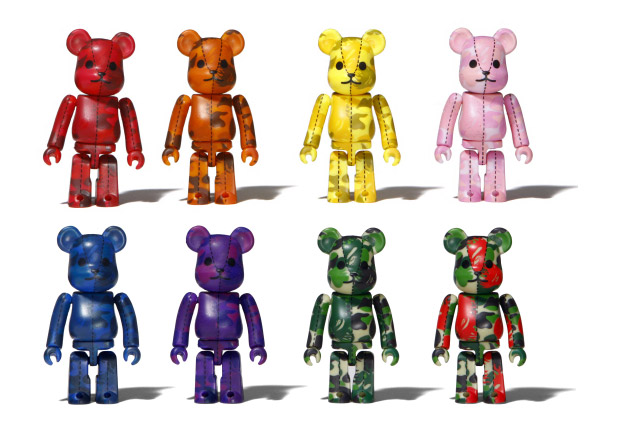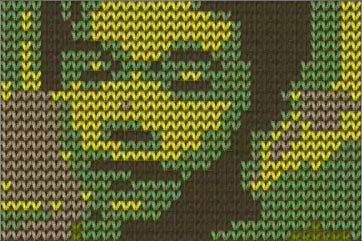This week we studied the art of ceramics and its significance about it. The speaker that talked about this topic was Professor Brian Gillis who works with ceramics as well as other medias. I found his presentation interesting because he brought up the term of multiples and how it relates to ceramics. The definition he presented for multiples was “a three-dimensional object that is intended to exist not as a unique work of art, but as an editioned original.” Basically, it’s when an art piece has additional editions or collections that is either exactly the same with minor changes, or there is a characteristic that relates it to previous pieces. Before this presentation I never really thought about art in terms of multiples. But this idea very broad and general that it's hard to determine what is a multiple. Throughout the class Professor Gillis kept questioning if a certain art piece is an example of a multiple. Some of the main comparisons he made were does it have to be an exact replica, or can it be something that just has the same shape? Could it even be using an existing physical object and presenting it through a different media? Can it be as simple as making copies of the same thing? Or could I be using materials from the existing art to make other things? All these questions were addressed during the presentation and it was thought these questions that made the topic very interesting. For once, it wasn’t about the examples showed, but the questions that arose from the examples that made the presentation worthwhile. It made me think though, multiples doesn’t only apply to ceramics. I disliked the fact that the presentation defined ceramics as being a process of multiples because when you think about all medias use multiples. In graphic design logos, posters, clothing, and print are being duplicated multiple times, isn’t this using multiples? It extends to fashion design, isn’t making more different sizes and color variations of the same item multiples? Isn’t mass production in general the idea of multiples? Even companies like Apple use multiples, hence the 5 generations of iPods. It’s amazing that an art term like multiples can be applied to real life situations and makes it understandable. This presentation instead of focusing on ceramics I came to understand how big the impact and importance of art is on our society. We can use art to explain things in a way that affects people instantly. Think about it, isn’t more interesting when there is a visual? It’s proven in lectures everyday, there is never a class where someone falls asleep to someone who is just talking. To close things up the term of multiples defines how we spread the greatness of art. It’s not about creating one extravagant piece, but creating an extravagant piece and being able to spread the importance of it to gain different perspectives.
The artist we studied this week was Gabriel Orozco who utilizes this term of multiples in his art. Out of his many artworks I found the Supermarket photos the most powerful and intriguing. The reason why I found it so powerful was because of its commonality. The environment of the supermarket is one anyone can relate too. So many things happen in this one area that no one really pays attention to the organization and strict protocol of a super market. Orozco basically took notice of how organized the supermarket is and decided to do something we always wanted to do, mess it up. Everyone has that urge in them sometime in their life where you just want to mess things up because its fun. And to do it in place where everything has a specific place and location is just amazing! This relates to the topic of multiples because he used more than one of the same objects to display the work. For example he moved five potatoes to the school supplies section by placing each potato on a folder. This is a multiple because there are five similar objects, and the repetition of it completes the message of the art piece. If there were only one of each object the affect would not be the same.
Another artist we studied this week was Justin Novak who is well known for his ceramic figurines entitled “21st Century Bunny.” His sculpture was really powerful because not only did it have this urban street vibe, which I am most interested in, but it had this strong patriotic feel as well. I had the idea that it almost challenged the problems in our government by using the red and blue colors. Also the fact that it is an animal, it kind of fits in with the political party animals character and because its neither an elephant or donkey it suggests this creation of a separate party. But, besides my idea of what I think the meaning is I still felt just appearance wise that the piece was successful. It has this playful and cute look that it makes you want to own one right when you see it. This relates to the term of multiples because he was able to create different editions of this one sculpture. Just by changing the size and color gives it a whole different feel even though it's the same shape. That is why the idea of multiples is so beneficial to art as well as society. Not only are artists able to spread their work around the world, but continue their artwork for many years.
The last artist we witnessed was JR and his TED wish. I found this artist’s work the most moving and touching out of the entire artists we studied. He took the idea of multiples to a whole new level. He used the art of photography and used it to spread a message around the world. Like I said before, multiples give artists the chance to spread their message around the world, just like JR. By printing multiple pictures and varying them by size gave him the opportunity to present this powerful message through art. After his first collection of photo installations he didn’t stop there, he took this idea and did another collection with a different message and photo subjects. He used the art of multiples to portray a different chapter of his art. He went from doing it in one town, then to multiple towns, to multiple countries, and now the whole world. This shows how powerful art can be, it can change the world. Even though it may be just posting pictures, the messages and stories behind the photos is what changes the world. By giving people the opportunity to share their stories to others and have people learn about it, he is changing the world. It may not be a drastic change, but he is slowly inspiring people to open up and not be afraid to share their thoughts. The world consists of people, and when you are able to inspire people, you are changing the world one person at a time.
After this week the first thing I could think of was Bearbrick. Bearbrick is a designer toy brand that utilizes the term of multiples. All there toys have the same shape but are painted differently. Every month they have a different collection that has a theme to the design of the multiple Bearbricks. For example a Star Wars Collection, Skittles, Spongebob, and many more. Even though it's the same shape, the changes in design make each collection entirely different from the rest.

















